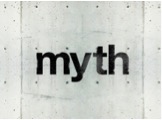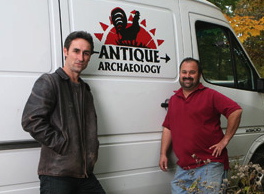 It is seven days until Christmas. The tree is up; outside lights come on everyday at 4:00pm; packages are wrapped (for me that means gift bags); Dottie has the freezer full of food (Christmas Day will be turkey and her world’s best stuffing—too bad Buddy the Elf isn’t here to burst through the front door shouting “Congratulations!”); Christmas Eve will be serving in four services at church. A busy but wonderful week and I have the Christmas spirit! (I serenaded myself with Little Drummer Boy while in the shower this morning.)
It is seven days until Christmas. The tree is up; outside lights come on everyday at 4:00pm; packages are wrapped (for me that means gift bags); Dottie has the freezer full of food (Christmas Day will be turkey and her world’s best stuffing—too bad Buddy the Elf isn’t here to burst through the front door shouting “Congratulations!”); Christmas Eve will be serving in four services at church. A busy but wonderful week and I have the Christmas spirit! (I serenaded myself with Little Drummer Boy while in the shower this morning.)
Among the carols, presents, starry night, manger scenes, wise men, and food, the words of the angel sometimes get lost:
Luke 2:8–11 (NIV84) — 8 And there were shepherds living out in the fields nearby, keeping watch over their flocks at night. 9 An angel of the Lord appeared to them, and the glory of the Lord shone around them, and they were terrified. 10 But the angel said to them, “Do not be afraid. I bring you good news of great joy that will be for all the people. 11 Today in the town of David a Savior has been born to you; he is Christ the Lord.
Those words—“a Savior has been born”—are the most important words of the whole Christmas story: “A Savior.” I need one—so do you. Jesus is mine. I hope he’s yours too.
Merry Christmas!
© Copyright 2017 by Dick Wells, The Hard Lessons Company
 If I ask you—“Should a Cadillac dealer try to sell Chevrolets?”—your answer would be emphatically, “NO.”
If I ask you—“Should a Cadillac dealer try to sell Chevrolets?”—your answer would be emphatically, “NO.”
But they tried it once. Wanting to compete in the small car market, Cadillac introduced in 1981 a Chevrolet disguised as a Cadillac called a Cimarron. But even with a Cadillac emblem and a leather interior, it was still essentially a Chevrolet with a Cadillac price. It was a disaster for Cadillac from both an image and profit standpoint and was discontinued with the 1988 model. (By the way, wanting a Cadillac, but unable to afford a real one, I bought a Cimarron in 1987. It was embarrassing when I realized it was really just a Chevrolet in fancy clothes.)
I made the same mistake in business back in the 90’s. We were a Cadillac company—building large (up to 100’ length) expensive ($0.5M and up) aircraft assemblies for Lockheed, Airbus, Gulfstream, etc. Having some open capacity on some equipment, we decided to get in the Chevrolet business by going after some low value machining business to utilize some of our open capacity and make a little “incremental’ profit. It was a disaster and a hard lesson.
We learned that if you have a Cadillac customer base, and a Cadillac cost structure, don’t try to compete with Chevrolet dealers.
There are many downsides:
So, when tempted, remember:
#1 If all that matters is price—it’s a commodity. It is hard to differentiate your business in a commodity market.
#2 Customers will not pay Cadillac prices for a Chevrolet. And you can’t fool them with a Cimarron.
#3 This almost never works as a “growth” strategy.
#4 The shallow end is always more crowded for a reason. (Think about it.)
No organization can be “all things to all people”: not companies, not colleges, not churches, not…yours. Don’t try. If you are the leader, choose Cadillac or Chevrolet, but not both.
[By the way, the Cimarron was a pretty good Chevrolet; not a very good Cadillac.]
If this post was interesting and useful, please forward it to a friend.
Copyright 2017 by Dick Wells, The Hard Lessons Company
 There are 31 days left in 2017; about 15-20 are workdays for most people. What you do these last days of 2017 can have a huge impact on 2018. So start 2018 with a clean slate, not bogged down with 2017 carryovers.
There are 31 days left in 2017; about 15-20 are workdays for most people. What you do these last days of 2017 can have a huge impact on 2018. So start 2018 with a clean slate, not bogged down with 2017 carryovers.
#1 Do Five Things You Have Been Putting Off For Weeks There’s a “call back” note on your desk…a garage to clean…a report to write…a visit to the doctor…you know what it is. Don’t let it continue to nag you in 2018.
#2 Spend Time With The Water Boys In Your Organization The water boy goes about his job in anonymity. She cleans the office at night or he opens up the church early on Sunday mornings. Take 15 minutes to sit down and talk. Learn about his hobby and her kids. Listen for that hidden message from the heart. Say “thank you.” It will be a great finish to the water boy’s year…and yours.
#3 Forgive Someone There’s a co-worker, family member, neighbor, or ___?___ you need to forgive—for your sake not theirs.
“Forgiving releases you from the punishment of a self-made prison in which you’re both the inmate and the jailer.” Doc Children and Howard Martin, HeartMath Solution (cited in Brain Power by Gelb and Howell).
“If I didn’t forgive, I would still be a prisoner.” Nelson Mandela
In addition to relieving harmful emotions, forgiveness is good for your health:
Forgiveness “boosts the immune system, lowers high blood pressure, reduces anxiety and depression, and improves sleep patterns.” Dr. Fred Luskin, director of the Stanford Forgiveness Project (from Brain Power by Gelb and Howell)
When we don’t forgive, we become a victim twice. First, when we are hurt, and second, when we chain ourselves to the pain. Bitterness and a desire for revenge are heavier weights than the original hurt; carrying them will wear you out emotionally. It’s not easy, but 2018 will be a much better year if you let go.
#4 Clean Out Your Inbox My inbox has 8 items this morning; my goal is zero on 12/31. Zero may seem an impossibility to you, so how about 10? Or 20? Don’t come in on January 2nd with a long list of 2017 carryover emails—get rid of them
#5 Plan Your First Day Of 2018 How you start 2018 will have a big impact on how you finish it. So hit the ground running on Day One. Before you turn out the lights on your last 2017 workday, make a list of five things to do first on the morning of January 2 (or whatever your first workday is). Limit your “holiday small talk” to an hour or so, then pull out your list and get to it. Go home Day One with five ✓ marks instead of “I’m already behind.”
No matter how busy, you have time to do these five things. Start 2018 by finishing well in 2017. You’ll be glad you did.
If this post was interesting and useful to you, please forward it to a friend. Thanks.
© Copyright 2017 by Dick Wells, The Hard Lessons Company
Jessie Garrett was my high school math teacher who—when I wasn’t planning on going—asked me, “Where are you going to college?” One year later, I was at Georgia Tech studying Aerospace Engineering. Thanks, Jessie.
John Duhon was my first boss in the aerospace business. He overlooked my “know-it-all” attitude and obnoxious behavior as an engineering intern. He mentored and encouraged me. Thanks, John.
Jim Rourke let me write a paper and present it at an aerospace conference in only my second year out of college. Thanks, Jim.
Jan Drees chose me to become a project engineer, my first step into real leadership. Thanks, Jan.
Ted Hoffman taught me what I needed to know about customers. Thanks, Ted.
Jack Floyd gave me a lot more freedom than I deserved. Thanks, Jack.
Cliff Kalista gave me my first job in marketing. Thanks, Cliff.
Bob Eggars taught me how to manage a project, delivering almost 500 helicopters in one year. Thanks, Bob.
John Kleban trusted me enough to run finance even though I had never even had an accounting class. Thanks, John.
CEO Bev Dolan was my #1 supporter at the Textron corporate office. Thanks, Bev.
Fred Hubbard recommended me to replace him as president at Textron Aerostructures. Thanks, Fred.
Richard, Kurt, Julie, John, Mike, Diane, David, Sandy, Linda, Laura and many others all fully supported me as I stumbled around learning how to lead in various roles. Thanks, all of you.
Rick White gave me my first opportunity to lead in my church. Thanks, Rick.
Carl Roberts told me that Hard Lessons was exactly what I should do and sponsored the first workshop at his company. He also provided the impetus I needed to write 16 Stones. Thanks, Carl.
Dottie, my amazing wife of 50 years, took care of the fort while I traveled more than 2 million miles. She raised two wonderful daughters, stood by me and supported me—for better or worse. She was the better part. I was the worse part. Thanks, Dottie, I love you.
God knows me—really knows me—and loves me anyway. Thanks, God.
Whatever success you have enjoyed, you didn’t pull it off by yourself. Take a few minutes this Thursday to remember those who helped you along the way.
If this post was interesting and useful to you, please forward it to a friend. Thanks.
© Copyright 2017 by Dick Wells, The Hard Lessons Company
 Failed change is more common than successful change in people and in organizations. Change is hard to initiate and even harder to finish. Why? Change myths are part of the reason.
Failed change is more common than successful change in people and in organizations. Change is hard to initiate and even harder to finish. Why? Change myths are part of the reason.
Myth #1: People and organizations change when they need to. Really? America has one of the highest obesity rates in the world. A lot of people know they need to lose weight. Most don’t. Some people need to stop piling up debt—but they don’t. Organizations have a lot of changes they need to make. But for whatever reason, they don’t get around to it, or when they try, it fizzles out. It takes a lot more than need to drive successful change.
Myth #2: People and organizations change when they want to. Most of those people who need to lose weight actually want to. Enough said?
Myth #3: Fear is an effective means of promoting change. “If you don’t __________, you’ll be fired.” Or, “The plant will close.” What a waste of time. Any change that arises from fear will be short-lived and marginal. It is a sign that bosses and bullies are in charge, not authentic leaders.
Myth #4: A PowerPoint presentation that fully explains the reason will successfully drive change. “If they understand, they’ll be eager to change.” Baloney. Somebody else will be giving reasons for not changing. And what about all the right brain artists out there? They hate PowerPoint presentations.
Myth #5: Casting vision over and over will bring change. This is just hubris on the part of the leader—believing that people will do whatever he/she asks them to do. People and organizations do not change because of somebody else’s vision. However, if it becomes their vision too, then change can happen.
So what will initiate and sustain change? Two things: people and organizations attempt change when they have to, or when they are inspired to. The leader’s job is to inspire it before the have to kicks in. Have to often fizzles out; inspired to has staying power.
It is easier to get married than to stay married. And it is easier to start change than it is to complete it. The leader’s biggest challenge is between the starting point and the finish line. What myth is holding back change in your organization (or your life)?
If this post was interesting and useful, please forward it to a friend.
Copyright 2017 by Dick Wells, The Hard Lessons Company
 We were offsite for some team building and inspiration. I was walking through the lobby on my way to the meeting room when I veered left to give her a quick hug. Why? She looked like she needed it. A few moments later she was sitting there with tears on her cheeks. Why? “She really needed that hug,” a friend told me, “and she needed it from you—her leader.”
We were offsite for some team building and inspiration. I was walking through the lobby on my way to the meeting room when I veered left to give her a quick hug. Why? She looked like she needed it. A few moments later she was sitting there with tears on her cheeks. Why? “She really needed that hug,” a friend told me, “and she needed it from you—her leader.”
It was a spontaneous moment in time—4-5 seconds—but it changed her day. That was about 20 years ago—it changed my leadership.
We are all familiar with carpe diem—seize the day. Sometimes seizing the moment is just as important. There is a lot of leadership discussion about creating moments. They are important but can sometimes feel contrived. However, capturing moments that occur naturally can be even more powerful. They are not contrived and not expected. And they are not forgotten even after 20 years.
If you are a leader, be alert to moments you can capture: a moment to encourage someone; laugh or cry with someone; hug someone; help someone; or celebrate with someone. Moments matter. Carpe occasionem—seize the moment. This would be a good moment to start.
If this post was useful and interesting, please forward it to a friend.
© Copyright 2017 by Dick Wells, The Hard Lessons Company
 Last week I talked about leadership anger—how destructive it can be to individuals and organizations—and I promised a “remedy” for it in this post. Now, this is not a “one size fits all” remedy because anger can be more complicated than that. But I know from personal experience that in many cases it works, so I offer it to you and hope you will take it seriously.
Last week I talked about leadership anger—how destructive it can be to individuals and organizations—and I promised a “remedy” for it in this post. Now, this is not a “one size fits all” remedy because anger can be more complicated than that. But I know from personal experience that in many cases it works, so I offer it to you and hope you will take it seriously.
Getting rid of anger is sometimes like packing for a trip: “What do I take? What do I leave behind? How many bags can I carry?”
If you have anger that is close to the surface and easily erupts at home, at work, wherever and whenever, it could mean you are carrying the baggage of unforgiveness with you. You carry it to the office; you carry it home; you carry it to church or the little league field. It is always close at hand. Someone hurt you—badly—and you haven’t been able to let it go, forgive them, so you can move on without dragging that heavy, exhausting bag around. So it doesn’t take much for the bag to open and spew out on others, even people you love.
There are a lot of reasons to get rid of this heavy bag. If you are a Christian, it is a spiritual imperative:
Be kind to one another, tender-hearted, forgiving each other, just as God in Christ also has forgiven you. Ephesians 4:32 NASB
See your pastor if you are dragging unforgiveness around. If he or she can’t help, get a new pastor. Apart from the spiritual dimension, there are still many great and practical reasons to forgive those who have hurt you.
Stanford University has studied the impact of forgiveness on your health—both physical and emotional. According to Dr. Fred Luskin, director of the Stanford Forgiveness Project, forgiveness “boosts the immune system, lowers high blood pressure, reduces anxiety and depression, and improves sleep patterns” (from Brain Power by Gelb and Howell).
In their book, HeartMath Solution, Doc Children and Howard Martin explain, “Forgiving releases you from the punishment of a self-made prison in which you’re both the inmate and the jailer” (cited in Brain Power by Gelb and Howell).
Few people had less reason to forgive than Nelson Mandela. He was tortured, slandered, imprisoned, and victimized by apartheid almost all of his life. Yet when leaving prison, he decided to forgive because he knew “if I didn’t, I would still be a prisoner.” He didn’t want to spend the rest of his life in a prison of his own making.
Anne Beiler, founder of the Auntie Annie’s pretzel empire and a victim of sexual abuse by her pastor, learned that she needed to “forgive because I can’t forget.”
In the “personal experience” mentioned earlier, the one I needed to forgive was myself. My wife once mentioned she had to “walk on egg shells” because she didn’t know when my anger at myself would be directed at her. A few weeks ago, a church staff member said he has to “walk on egg shells” around his current pastor. How sad. If you are a leader and your followers are “walking on egg shells,” you need help and a good starting place is forgiveness of others and maybe yourself.
Forgiveness is a gift to yourself; it is about you putting down those life-sapping, heavy bags and getting out of a self-made prison. I am not suggesting this is easy and you may well need help. (If you live near my hometown of Franklin, TN, contact The Refuge Center, they’ll be glad to help.) Decide today, for your sake and the sake of those you lead: “Whatever it takes, I am not going to drag unforgiveness around any longer. I’ll get help.” Pick up the phone right now—call for an appointment—you’ll be glad you did.
If this post was interesting and useful, please forward it to a friend.
© Copyright 2017 by Dick Wells, The Hard Lessons Company
 I was in a meeting yesterday in which I heard that a senior leader had suggested that a mid-level leader should have responded with anger to another person’s anger. In other words: both of you being angry will somehow yield a better outcome than one of you being angry. That was lousy advice and it’s a lousy leadership practice.
I was in a meeting yesterday in which I heard that a senior leader had suggested that a mid-level leader should have responded with anger to another person’s anger. In other words: both of you being angry will somehow yield a better outcome than one of you being angry. That was lousy advice and it’s a lousy leadership practice.
At the 2010 Willow Creek Leadership Summit, one of the sub-themes was, “I will stop using anger as a leadership tool.” I do not claim I have never used anger as a leadership tool—I’m not that perfect. But I cannot recall a single time when my anger yielded a positive outcome. Why?
Anger supposedly demonstrates who is in control. What it really reveals is who is out of control.
Anger supposedly will promote change in behavior. What it really promotes is pervasive fear that paralyzes the organization.
Anger supposedly shows strength of position. What it really shows is weakness of character.
Anger supposedly reinforces “I’m right.” What it really reinforces is “I’m proud.”
It is interesting that in scripture, God puts anger in the same list of sins as immorality, idolatry, sorcery, and drunkenness:
Galatians 5:19-21 (NASB95) Now the deeds of the flesh are evident, which are: immorality, impurity, sensuality, idolatry, sorcery, enmities, strife, jealousy, outbursts of anger, disputes, dissensions, factions, envying, drunkenness, carousing.…
That’s enough said about how God feels about it.
Anger rarely if ever accomplishes anything good. It may accomplish what you intend, but only if your purpose is self-centered and intended to inflict humiliation and pain. Anger always has the effect of damaging relationships—at home, in the church, at your workplace. So take to heart the Summit sub-theme. Resolve today that you will stop using anger as a leadership tool. You’ll be a much better leader.
By the way, don’t kid yourself that “forgive me” will erase the effects of repeated outbursts. “Forgive me” only works if it doesn’t happen again.
Do you have an anger problem? I’ll offer one solution in my next post.
If this post was interesting and useful, please forward it to friend.
© Copyright 2017 by Dick Wells, The Hard Lessons Company
 According to the Gallup organization only about 30% of employees in a typical American workplace are actively engaged in their job. The rest—70%—are benchwarmers taking up space, doing only what they are told to do and waiting for payday and Friday (my words, not Gallup’s).
According to the Gallup organization only about 30% of employees in a typical American workplace are actively engaged in their job. The rest—70%—are benchwarmers taking up space, doing only what they are told to do and waiting for payday and Friday (my words, not Gallup’s).
Interestingly, the percentages don’t change much because of age, education, gender or even income. People making more than $90,000 per year are no more engaged than people making less than $36,000 per year. Imagine that. Gallup has proved once again that pay is not a long-term motivator for most people.
Is there something leaders can do to raise the engagement level? Yes. Employees will engage with their jobs when leaders engage with their employees. It’s that simple.
So if you are the leader, it’s up to you. Try this: sit down with one of your unengaged employees, ask how you can help him, listen (really listen), ask questions, act like you owe her as much as she owes you. Do it with somebody else tomorrow…and the day after…and the day after…. Is it worth the effort? Yes! Imagine your competitive advantage and improved productivity if you can increase your engagement level to 40% or even 50%. Why don’t you get started today?
© Copyright 2017 by Dick Wells, The Hard Lessons Company
If this post was interesting and useful to you, please forward it to a friend. Thanks.
 The stars of the TV show—American Pickers—are Mike and Frank. Their vehicle is a white van labeled Antique Archaeology; their arena is the back roads of America; their passion is Americana artifacts and collectibles—things that are buried under piles of stuff, waiting to be discovered and put on display in one of their stores. They crawl around in attics, old barns, junkyards, and weed-and-snake-infested fields—looking for…well…the kinds of things you find in attics, old barns, junkyards, and weed-and-snake-infested fields. (Actually, they aren’t looking for snakes.) For example, a battery-powered, guitar-playing, mechanical monkey in a country-western outfit was a “big find” on one show. One of their heroes is Hobo Jack, located in Litchfield, Illinois. He has acres of junk waiting to be discovered, but is not an easy mark; he drives a hard bargain.
The stars of the TV show—American Pickers—are Mike and Frank. Their vehicle is a white van labeled Antique Archaeology; their arena is the back roads of America; their passion is Americana artifacts and collectibles—things that are buried under piles of stuff, waiting to be discovered and put on display in one of their stores. They crawl around in attics, old barns, junkyards, and weed-and-snake-infested fields—looking for…well…the kinds of things you find in attics, old barns, junkyards, and weed-and-snake-infested fields. (Actually, they aren’t looking for snakes.) For example, a battery-powered, guitar-playing, mechanical monkey in a country-western outfit was a “big find” on one show. One of their heroes is Hobo Jack, located in Litchfield, Illinois. He has acres of junk waiting to be discovered, but is not an easy mark; he drives a hard bargain.
[BTW…Mike is also great a picking a place to live as he now lives in my hometown of Franklin, TN.]
Wondering what this has to do with leadership?
Most every organization, large or small, has one or more people waiting to be discovered. They, for reasons now forgotten, are buried on a hallway the leader rarely visits, hidden in the last of a row of 20 cubicles, sitting near the back of a large-church worship center, or working in a field office that is on the other side of town. They are a bit dirty and dusty; maybe dinged up some. But they could be worth a lot if discovered and encouraged or trained or challenged.
As a leader, you have a lot to do. You can’t spend all day rummaging around in the attics of your organization, but you can spend a few hours every now and then. Decide now you will become a “picker,” looking for hidden value in your company, or church, or even your family. You may be surprised who you find—someone just waiting for a chance to shine again (or shine for the first time). Imagine the satisfaction you’ll feel as you’re driving home that day!
If this post was interesting and useful, please forward it to a friend.
© Copyright 2017 by Dick Wells, The Hard Lessons Company